[00:00:00] In today’s ATEM Mini tip, we’ll be looking at how to create proper graphics with proper transparency for your ATEM. This could be for an ATEM Mini, ATEM Mini Pro, ATEM Mini Pro ISO, ATEM Mini Extreme… you get the idea, any ATEM model, this applies.
[00:00:15] Now, we’re going to build this through a series of progressions because when you start off with a basic transparent file — a basic PNG with no drop shadow, no gradients; nothing fancy — you don’t need to do anything special, just output a PNG and you’re fine, and we’ll look at that.
[00:00:30] But as soon as you start adding drop shadows, things get a little bit tricky. You might add a drop shadow and export as PNG and it looks okay. You probably don’t even notice the difference until you look really closely. But then if you start doing things a bit more fancy, like having gradient transparencies, then things can get pretty ugly pretty quickly. So, we’re going to look at all of that; we’re going to look at how to create the proper graphic using Photoshop because there’s actually a plugin that comes with your ATEM that is installed by default when you install your ATEM software into your Photoshop plugins, but if you don’t have Photoshop then you can’t use that. So, at the end I’m going to show you how to do this without Photoshop as well. Let’s get started!
[00:01:08] Today we’ll be using the ATEM Mini Pro ISO, but again this applies no matter what ATEM you’re using. I’m going to start with Photoshop. We’ll create a new document; I’m going to go to the Film and Video presets to choose HD TV 1920x1080 – that’s the size of my output – and I’m going to set the background contents to Transparent.
[00:01:27] Click Create… and I’m just going to do something really simple. I’ll grab the Text tool, click it on here and type in “PhotoJoseph”, I’m going to make this nice and big on here, you can see I’ve already got a bright yellow color selected, and then I’ll add a Drop Shadow. I’m just going to do this with the Photoshop tools; go to the Effects tab, add a Drop Shadow, and I’m going to make it really big and bold like this. Click “OK” and that’s it.
[00:01:53] Now to export this as a PNG, I’ll go “Export As”, it’s set to PNG, we have Transparency enabled and that’s all I have to do. Click Export; I’ll call this “PhotoJoseph”… and save that. Now let’s switch over to the ATEM Software and go to the Media tab. I’ve already saved this ATEM files folder as a Favorite, which by the way if you don’t know how to do that, you can right-click on any folder and add or remove from Favorites.
[00:02:22] There’s the file that I just created, I’ll go ahead and drag that into the Still Store and that automatically loads it up into Media Player 1. Now let’s go back to the Switcher, I’m gonna go to my Downstream key, it’s set to Media Player 1 with the key source; that’s the Alpha channel being set to Media Player 1 key which is what I want and I’m going to leave premultiply key OFF for now and go ahead and bring this on air. So there’s the graphic.
[00:02:45] Now you can see the transparency and you can see the drop shadow and you can see that it’s not exactly right, there’s some weird edging to it. Okay, well, let’s turn on premultiply. I’ll turn that on… and it’s better. This is definitely better. And for the most part, this is perfectly fine.
[00:03:01] So, if all you’re doing is adding a drop shadow, try it like this and if it works, it works and you’re good to go. It kind of depends on the graphic. But now let me show you where this breaks. Let’s go back over to Photoshop and I’m going to create a rectangle in here; just a simple shape, and then I’m going to add a mask to that, grab the Gradient tool by hitting the G key and I’m just going to drag the gradient across just to give it this transparency.
[00:03:26] So, all we have now is a big box that goes from solid to transparent yellow and you can see that it falls off somewhere around here, it goes to completely transparent. So just remember, right around the E to PH in PhotoJoseph, that is really dropping off to total transparency.
[00:03:41] Now, let’s export this out as a PNG and this one we’ll call “PhotoJoseph + grad”. Back over to the ATEM Software, back in the media tab, there it is, we’ll drag it in and right now it looks just fine. Let’s go ahead and drag this into place here and it’s going to immediately load up and we see a huge problem in here - that is not okay! So, clearly we have broken things.
[00:04:07] All right, well let’s just go back and see what’s happened here. We’ve enabled premultiplied key, so the software is looking for a premultiplied key but this isn’t a premultiplied key. Now, what is a “premultiplied key”? We’ll get into that a little bit but for now this isn’t it. So, let me just turn that off.
[00:04:22] Oh well, that’s better, right? But hold on, look at the drop shadow — the drop shadow is back to its kind of weirdness. Well, I do have some options down here. I mean, I can play with the clipping and try and make that a little bit better and maybe adjust the gain on that. Well, we can see where that falls apart pretty quickly.
[00:04:37] You might, once again, find something that you’re happy-ish with, but this is definitely not going to be correct. What’s correct is to export a premultiplied key. So, what does that actually mean? Well, a premultiplied key has the alpha channel drawn against a rendered-out black or white; in this case the ATEM software software’s looking for black. And what that means is that your transparency needs not to fade to transparent but fade to transparent with black blended in.
[00:05:04] Now, how do we know this? Well, we’ll come to that. But let’s go ahead and look at how to do this using Photoshop the easy way. Back into Photoshop; the exact same document. I’m going to go to the file menu and under Export, you’ll find the ATEM Switcher Media Pool option.
[00:05:18] This is a plug-in that is automatically installed when you install your ATEM software. The first thing we have to do is enter the IP address of our switcher — if you don’t know what that is switch back over to the ATEM setup software, jump into here and you’ll find the IP address right there; so, 10.0.1.105, that’s the IP address for my switcher and there we have it.
[00:05:36] I can name “My Export”, I’m going to go ahead and call this one “Plugin”, so I know this came from the plugin, I can choose where I’m going to drop that. We’ll drop that into media pool location 3; it even tells me that it’s empty. We’re going to tell it that this is a premultiplied alpha, this is an important step. To check that checkbox is what’s going to make this work.
[00:05:53] And then you can also choose to have it, after export, do nothing, or actually automatically set it to Media Player 1. What this means is that once I export it, it’s going to drop it into this spot here and load it up into here at the same time. This is actually really cool. This means that you can create graphics on the fly during a live production and send those graphics live to air from Photoshop, neat. But let’s get back to this - I’ll switch over to Photoshop, again we’ve named it “Plugin”, it’s going to media player 3. It’s going to send it live to air, click export and it loads it into the ATEM and it loads it up on air, but it’s still not totally right. Let’s go back over to the ATEM software, go to the Switcher, and premultiply key is not turned on, let’s go ahead and turn that on and now we have the right transparency .
[00:06:39] Look at the drop shadow and look at the gradient - the gradient is ending where we wanted it to and the drop shadow looks really, really good and clean. So, this is the way it’s supposed to look, this is what we want. Okay, but this required a plug-in in Photoshop. So, what is it doing? Well, remember I explained the premultiplied key. Let’s take a look at what the actual output file looks like.
[00:07:00] The way to do that is to save the output from the ATEM into a new folder where we’ll be able to see the graphics that this plugin actually created.
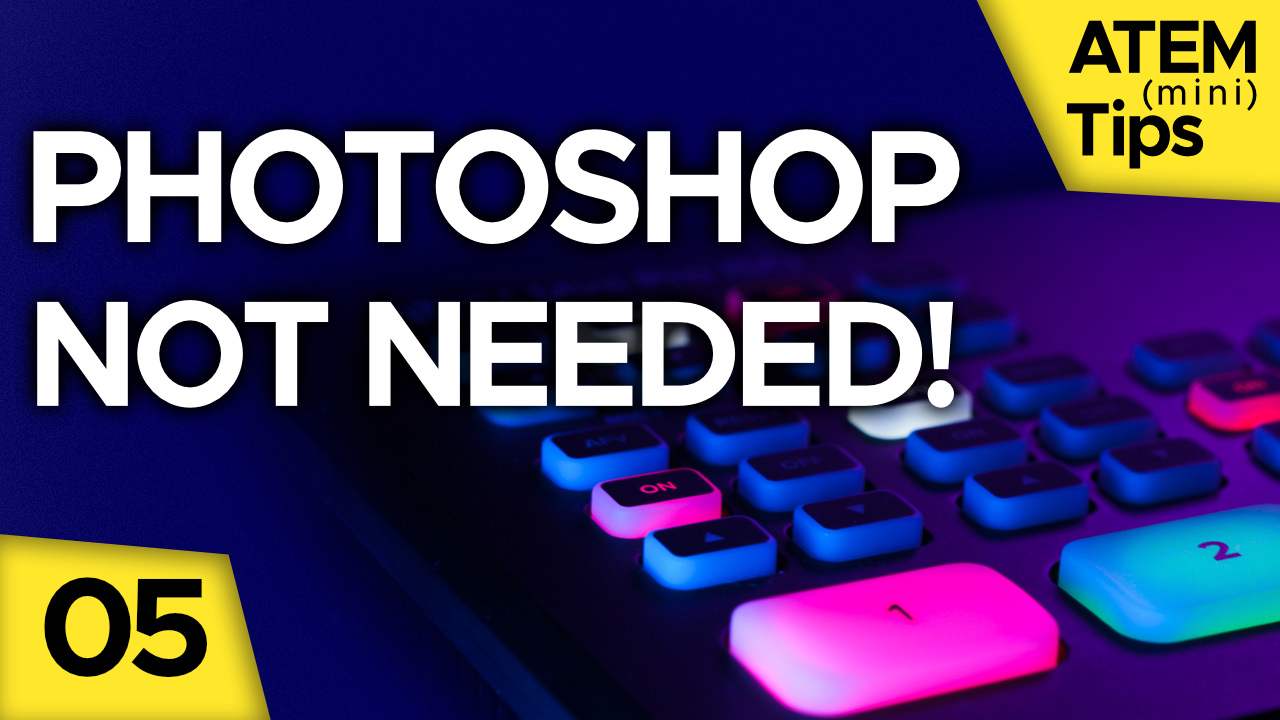
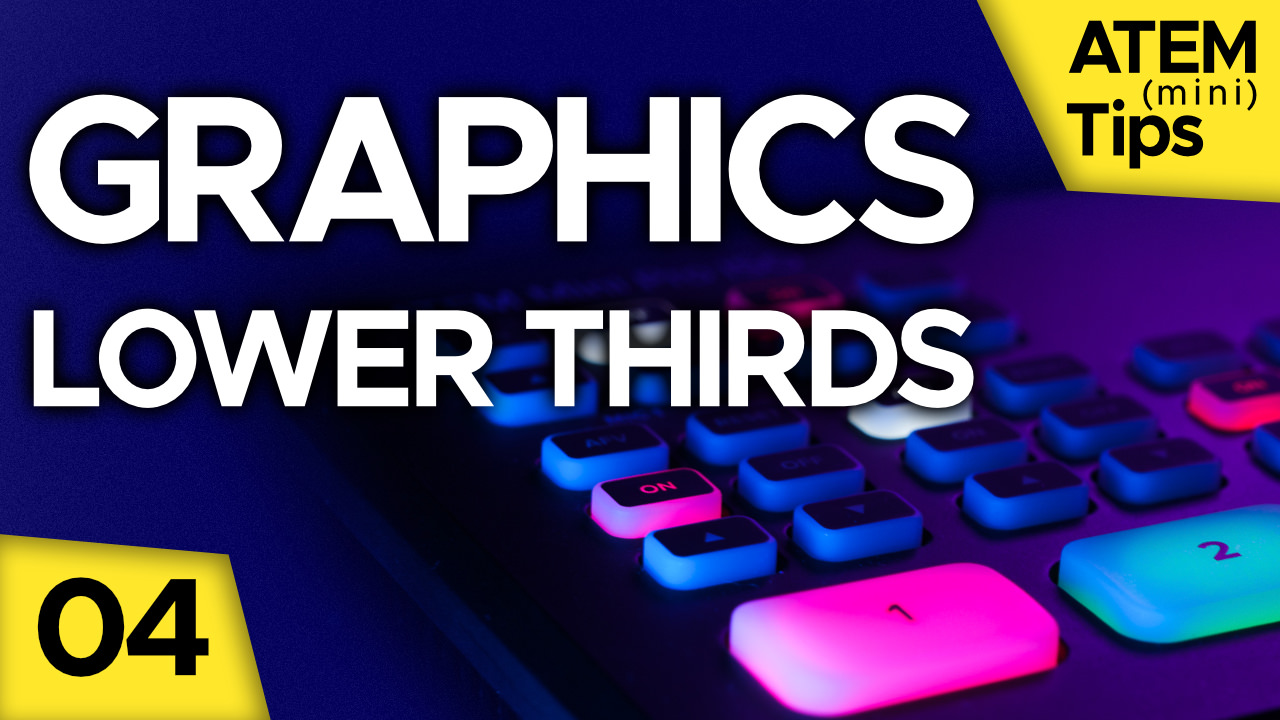
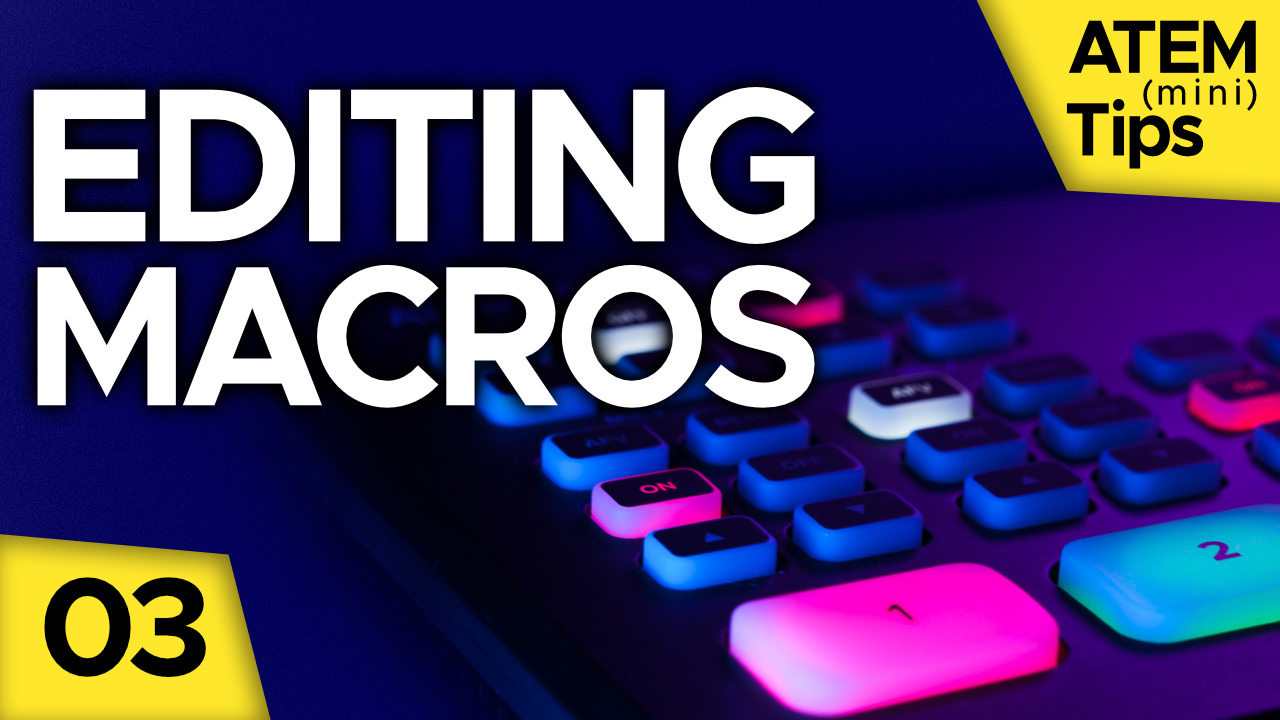
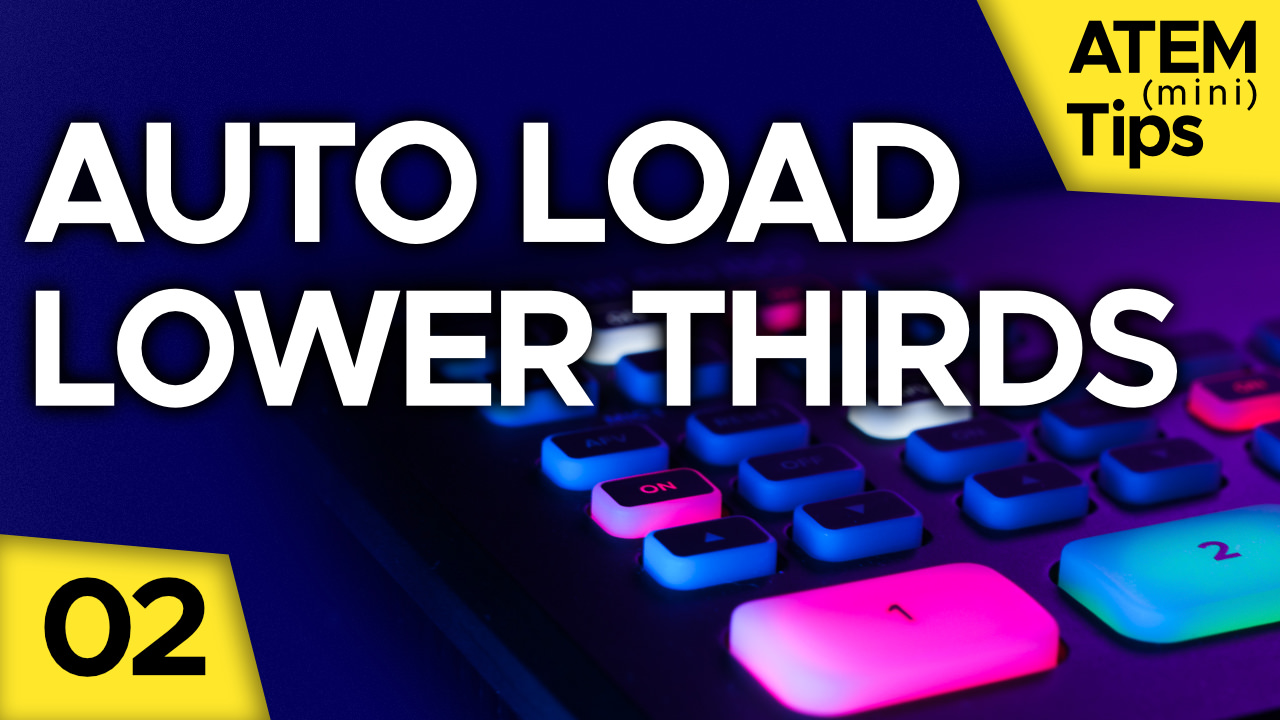
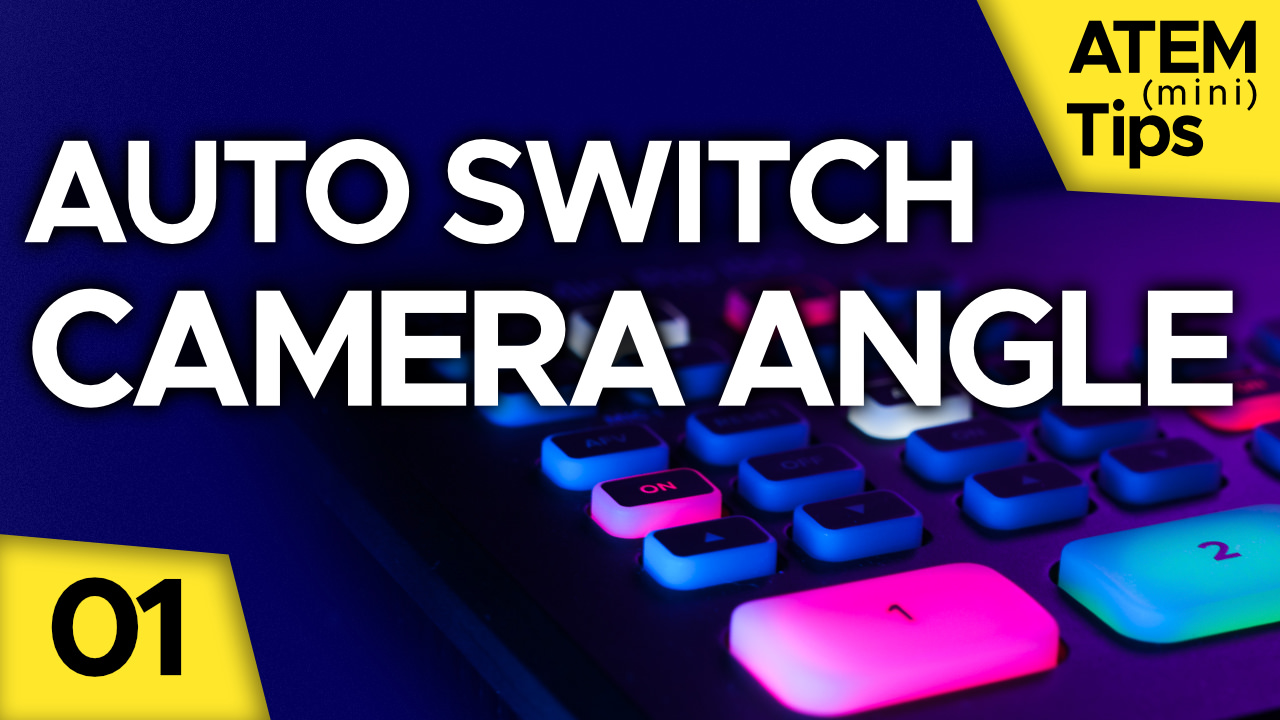
Comments from YouTube